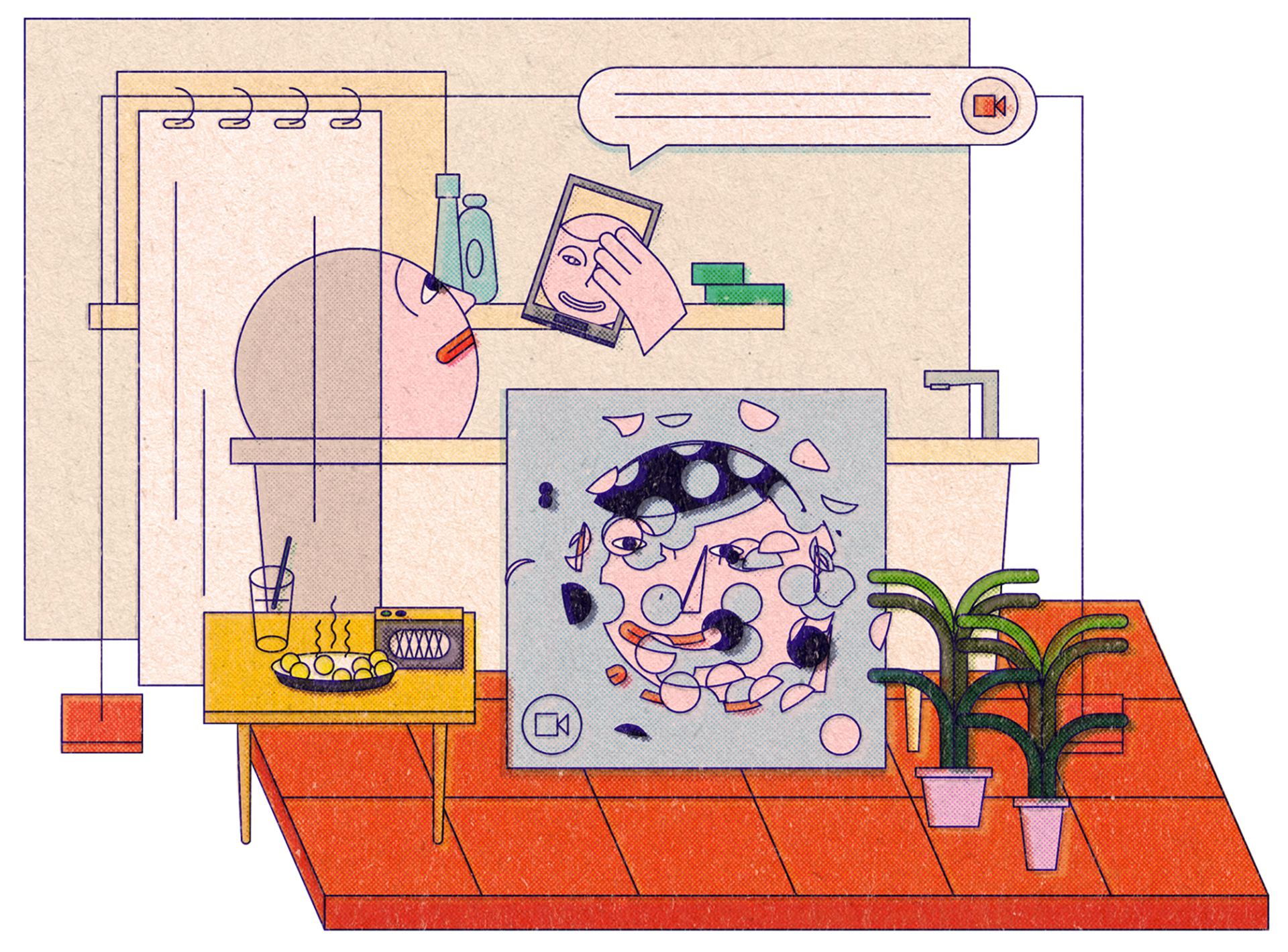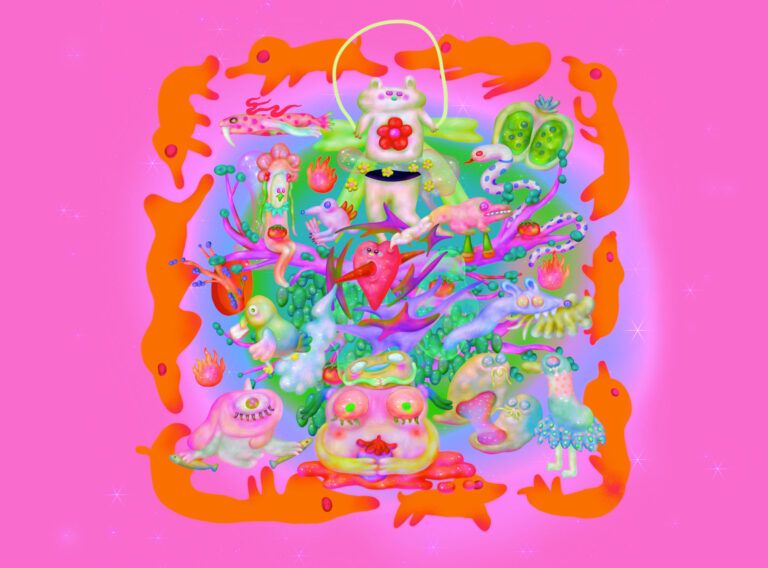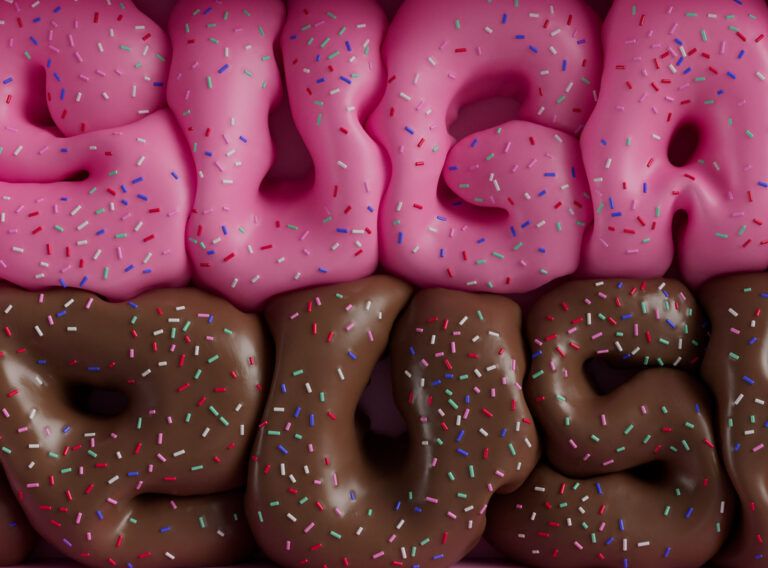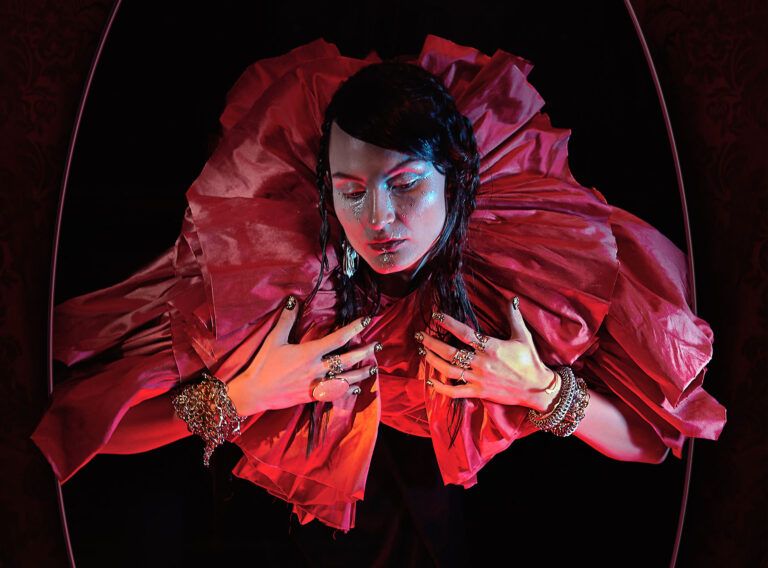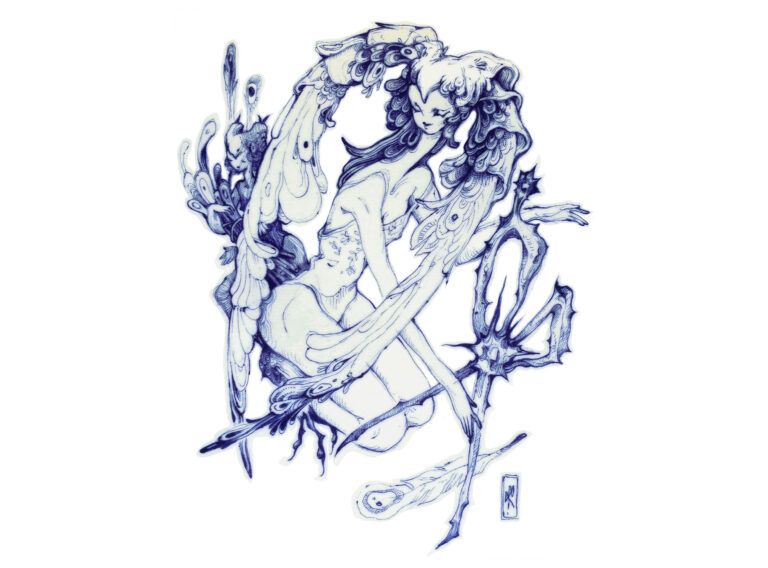Visual culture has been in a constant movement and, approx. 40 years ago and with the onset of digitalization, the transformation of the function of an image and general aesthetic criteria gained major speed. Images began to satisfy us in a completely new way. The traditional artistic values started to be more and more intuitively permeated by the fast lo-fi aesthetics of today. The image became a fetish and the virtual environment became a tool, which could easily combine said image with well known and oftentimes a bit boring reality. The initial excitement from virtual reality was gradually replaced by craving realistic but often unattainable experiences and the creators began to insert increasingly more real elements into their fictitious virtual worlds. A balance had to be found between visual fragmentation and the flood of digitalization. And so augmented reality took place right next to VR and interlinked the safe space-time with a new dimension of an image.
Even though the term AR (augmented reality) is introduced by Tom Caudell and David Mizell in the 90s, the first technological attempts took place more than 20 years earlier. With the contemporary fondness of retro looks, Sword of Damocles as the predecessor of headsets or Myron Kreger’s Videoplace project would stand the test even today. The year 1992 sees Louis Rosenberg of USAF Armstrong Lab bring the first fully functional headset and less than 20 years later, a wide spectrum of creators starts to work with AR via ARToolkit mostly without reliance on larger technical support. The last nail in the AR coffin is hammered by social networks alongside technologies that constantly modify them. Selfies paired with filters and effects become the contemporary self-portrait.

The influences and tendencies of AR in today’s visual culture are no easy feat to fully cover. I will try to use the following selected works and approaches as substitute models for the current visual phenomena and to outline, by a free stream of associations, how we have been working with visual elements during the few last years.
Instagram filters became one of the essences of today’s visual culture. They mirror the globalized pop-culture influences alongside the current fascination with surfaces and materials. Even though their application on one’s face generalizes, the user is under the impression that, on the contrary, their individuality and uniqueness is being highlighted. The symptom of filters and effects (and of the present day in general) is overproduction – the oversupply and generation of new patterns based on thousand-times rehashed but still popular structures. The mentioned elements are brilliantly represented in the work of e.g. Johanna Jankowska, a young artist who, by applying monochromatic structures, lends the human face almost a sculptural attribute. Almost as if dipping the face into melted gold or a glittering gel created a constantly morphing post mortem mask. Jankowska uses the fluidity and reflections to balances between elite, expensive materials and organic waste. Mark Vakefield takes this balance all the way to the border between disgust and fascination. His filters make reference to dystopian decomposition and contemporary visual phobias (e.g. tryphophobia). Rendering and digital structures brought an array of new perceptions that are both borderline captivating and revolting and users are shamelessly enjoying them, whether we speak of Facebook videos of oddly behaving materials, the fascinating crocheted coral seabed installation by Christina and Margaret Wertheim from last year’s Venice Biennale or a blogger who squeezes out zits in her vlogs. The portrait breaks down and shatters under Mark’s filters, disappearing under bacterial teeming. Furthermore, traditional human values are challenged by e.g. Blagovest Dimitrov who replicates a car accident with his Eleven filter and leads the user to the thin line between life and death through the effect of broken glass and running blood.
The visual culture of today is very different, compared to other historical periods. Art lost the exclusive position of high aesthetic value and way more naturally sails through the sediment of other images. It’s hard to say if the viewer has got a more refined eye and a greater understanding of the concept or is, on the contrary, numbed by all the visual ballast. One thing is clear – the character of contemporary artworks is, more than ever, subjected to the socio-cultural and technological environment. Augmented reality is fairly often distinguished by low aesthetic and its utilization in art is quite the double-edged sword.

Let’s look at Reblink, the project of AGO Gallery from Toronto, Canada. This project combines the catalogued works of world’s greatest painters and AR in a very disparaging way. The perfect chiaroscuro of Flemish master Cornelius de Vos gets complemented by a wannabe consumerist installation of cans and bags of washing powder and we can suspect an attempt at appropriation and an exaggerated critique of the society but if the message is already that simple, why the goods aren’t at least controversial? I can’t deny that the coronavirus crisis of today would probably greatly resonate within canned food and detergent but the year 2017 would be more successful with an H&M hoodie or another representative of fast fashion or globalization. All AR implemented mocks the technique and contents of the works and, therefore, degrades the exhibition to a funfair level. AR functioned a bit better in the MOMAR project that implemented the works of nine internet artists into the works on display in New York’s MOMA gallery in 2018. Through post-internet aesthetic, these combinations give us the opportunity to see classic works in a contemporary context. Still, we are moving about on thin ice of the original value of the exhibits and the tour lacks the present and real experience of the works. The observer can’t sense the light nuances nor paint layering through the display and the gallery visit becomes a virtual online walkabout in the end.
A German artist LITTO could lift the mood as she also works with expanding the reality of existing paintings but she uses her own instead of works of old masters. The paintings come to life directly to be combined with AR and the result blurs the borders between a real painting and a digital insert. Who handled AR interestingly overall was Brian Donnely aka KAWS who, for the purpose of his Extended Holiday project, created a huge virtual sculpture of a clown levitating freely over 12 important landmarks on six continents. Thanks to the impossibility of physical interaction, the sculpture gains a more realistic nature and the object’s materiality works great with the AR render. On the other hand, Estella Tse uses dimensional stratification and, in the Two Sides of the Same Coin installation, places virtual drawing inside a real-life gallery installation. Both elements can function independently and their blending produces an interesting fusion of digital drawing and almost ritual Environment. And, as the golden end highlight of the topic, I’ve left my favourite John Rafman and his act at 2016 Berlin Biennale, phenomenally curated by DIS Collective. View of Pariser Platz can be technically filed under VR but works with a real view of Brandenburg Gate, which morphs into a dystopian scene of violence and social and evolutionary deviations in a four-minute projection. It’s almost as if he used breathtaking magnificence to follow up on the long line of death and inevitability running through the entire history of visual culture.

Virtual inputs into a real environment are hard to asses. On one hand, we use them daily without much remorse but, on the other, we feel as if they take away the authenticity and realistic experiences. We run away from digitalization into forests but then, in place of being productive, we are able to watch for tens of minutes on Facebook how a colourful frosting is being poured over a cake base or how shiny epoxide fills in the gaps between sanded down planks. Anyhow, the current escalated situation with social distancing is enough of proof the “real” reality can’t be replaced by any digital intervention. The viewer needs physical contact – both with the works and people’s authentic reactions. Displays not only distort the physical properties of the artworks (colours, shapes, size…) but also their emotions and atmosphere, which is the most important artistic contribution. People in lockdown crave traditional handiwork and, instead of online gallery and theatre visits, they embroider and glue together miniatures. We all need haptic and personal experiences and that’s why digital interventions can never entirely replace reality. And even though their potential evolves hand in hand with visual culture and will, most probably, stay as its inseparable part in various forms, they will never rightfully mediate such a strong emotional experience as reality.
ABOUT THE AUTHORS /
Text / Barbora Čápová is currently finishing her doctoral studies where she pursues transformation of contemporary visual culture within the scope of digital technologies. She looks for interdisciplinary intersections between art and journalism. The VICE magazine hosted her own social documentary section and she further contributed to magazines such as Material Times, Czech Design or Artalk.
Illustrations / Rafał Kwiczor lives in Warsaw and illustrates as a freelancer. He builds complicated narratives, based on movement, in which one must discover the element that drives the whole piece. According to him, a game from the 90s, The Even More Incredible Machine, perfectly reflects his illustrations, the way he acts and how he creates the closed, sad, nostalgic and even depressing world, filled with embarrassed heads with outdated hairstyles. Visit Rafał’s Instagram: @rafal.kwiczor
Translation / Františka Blažková
